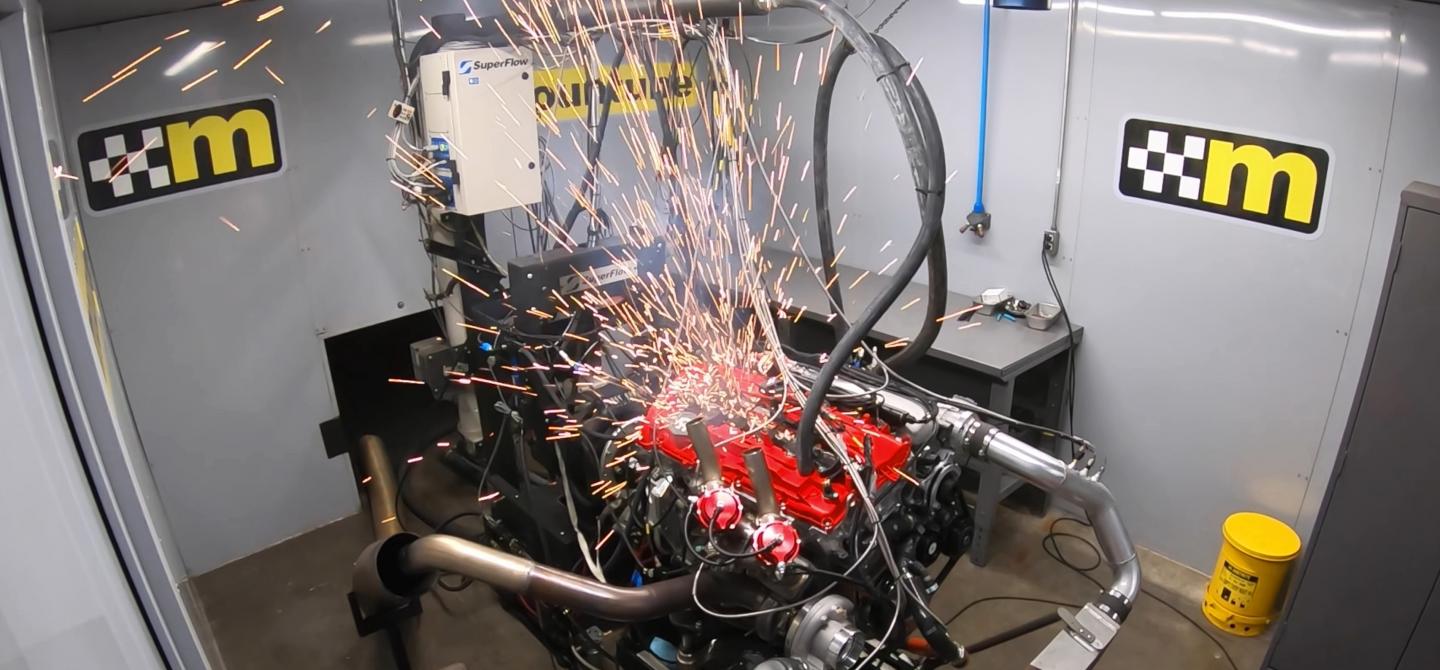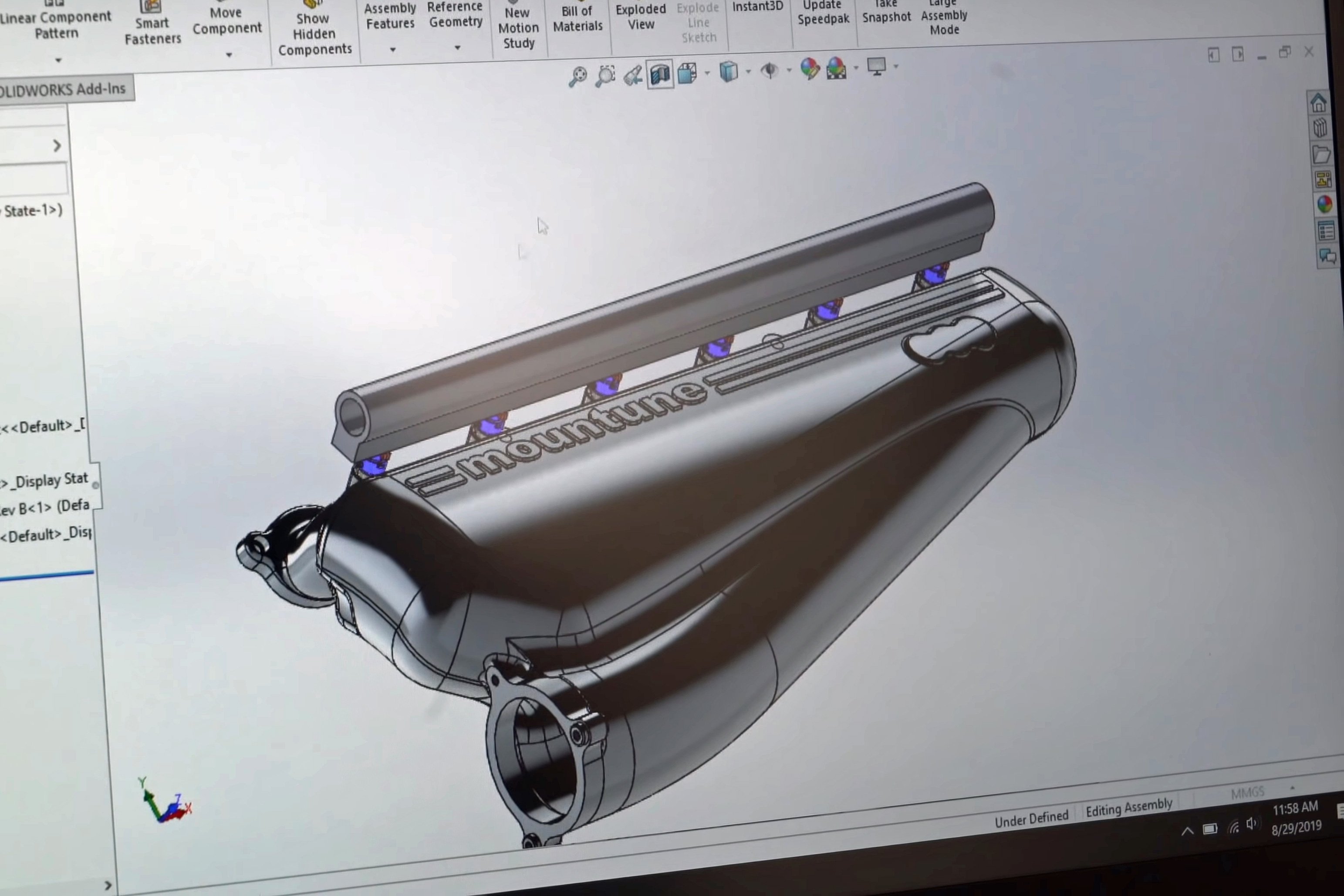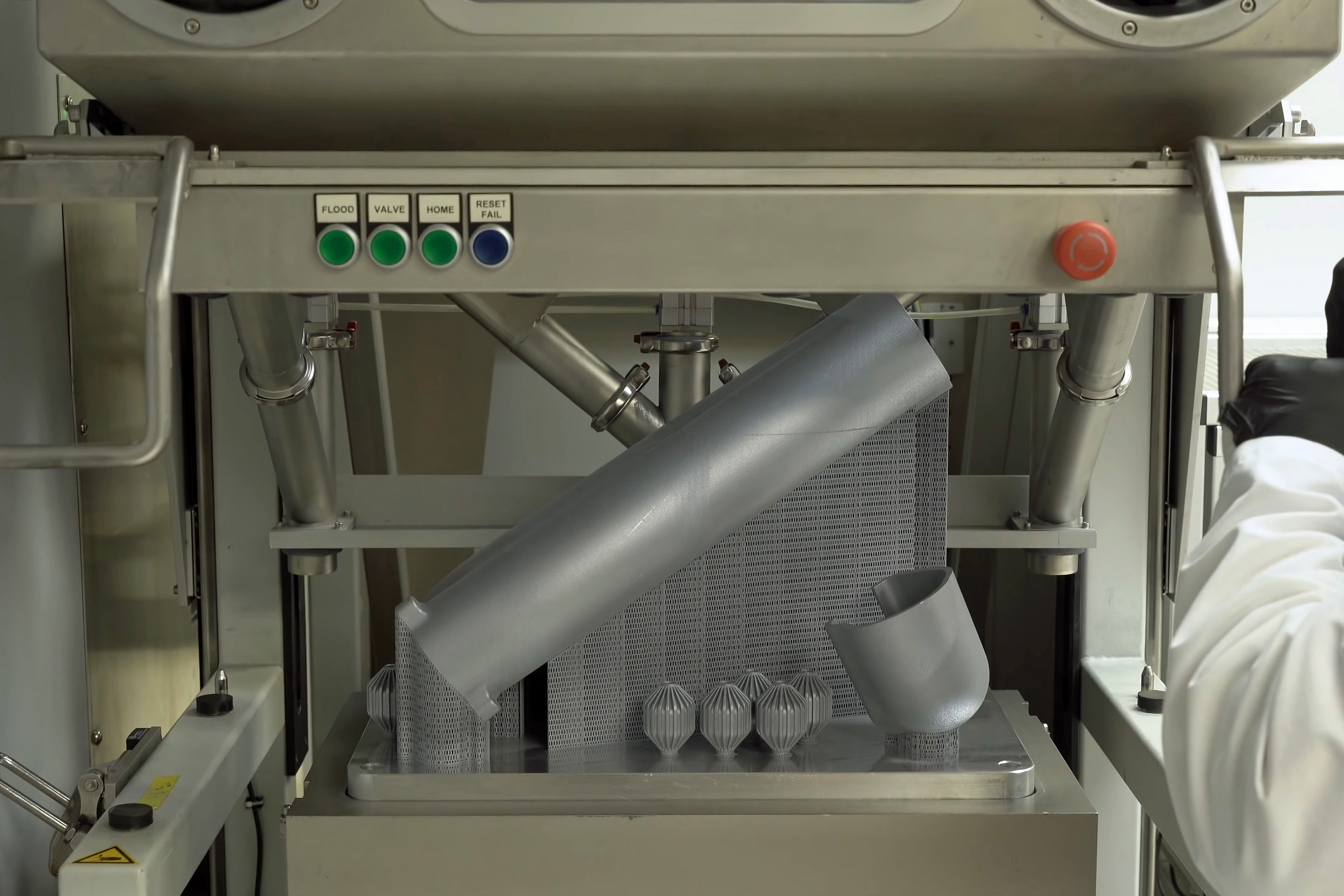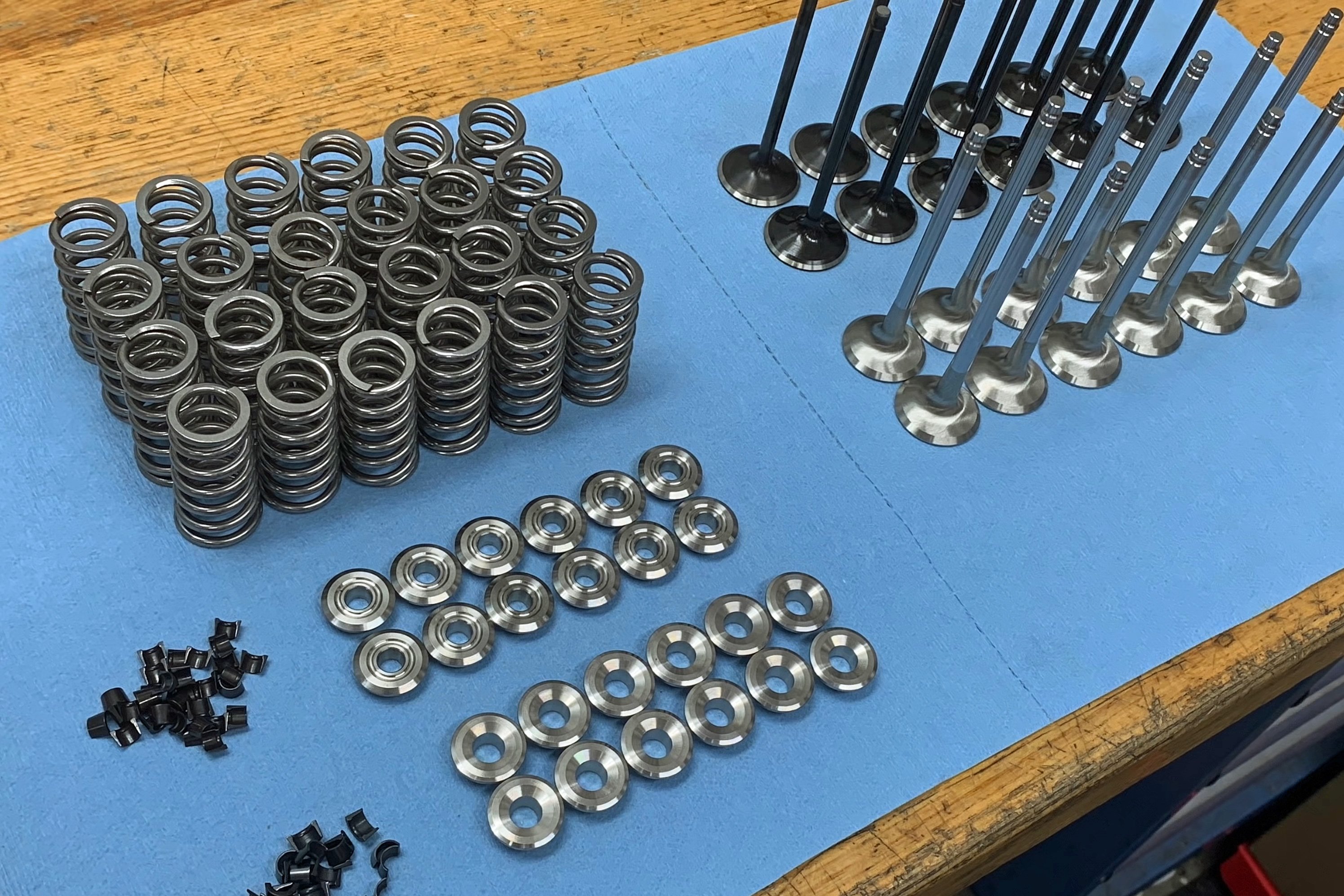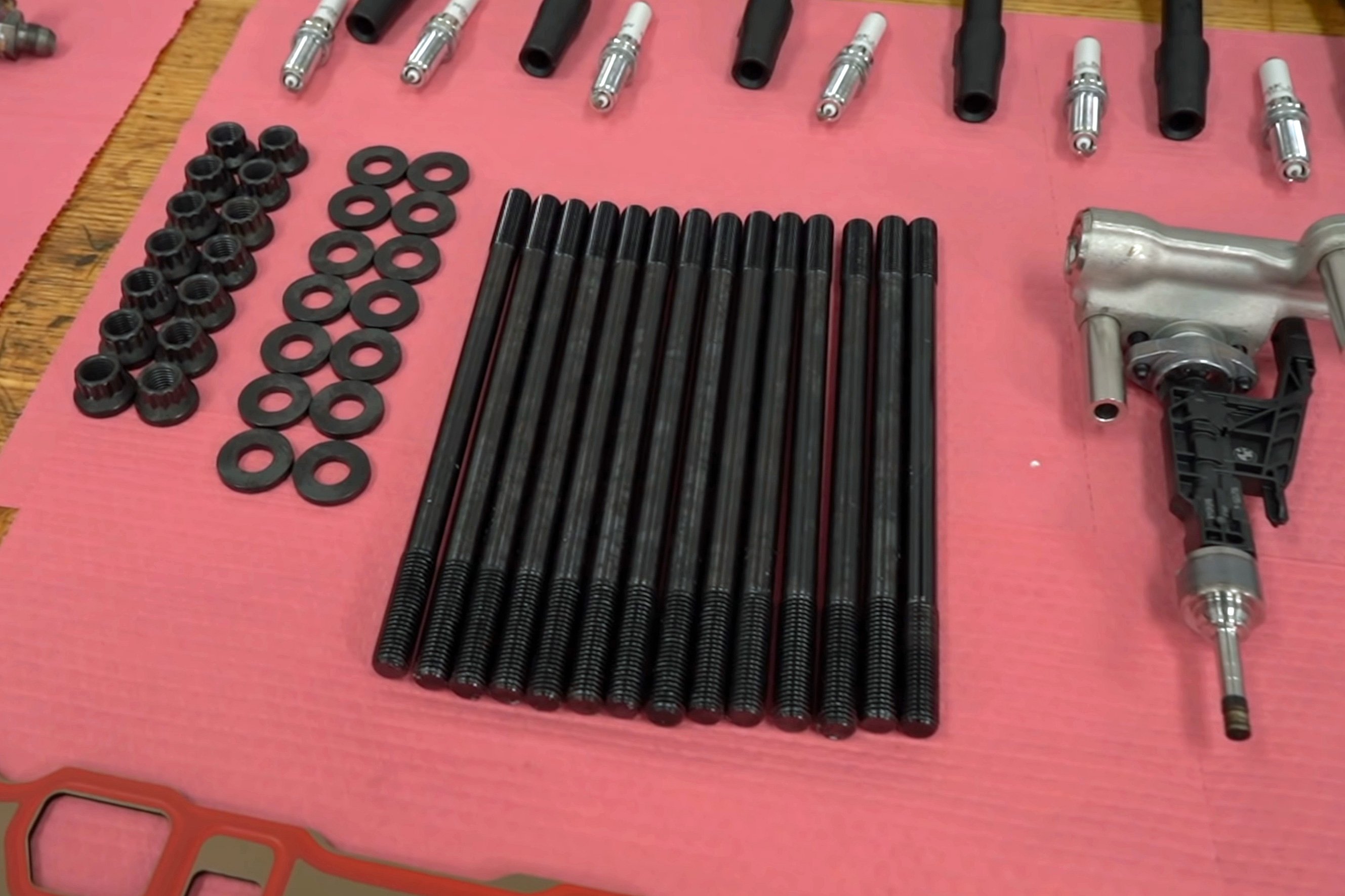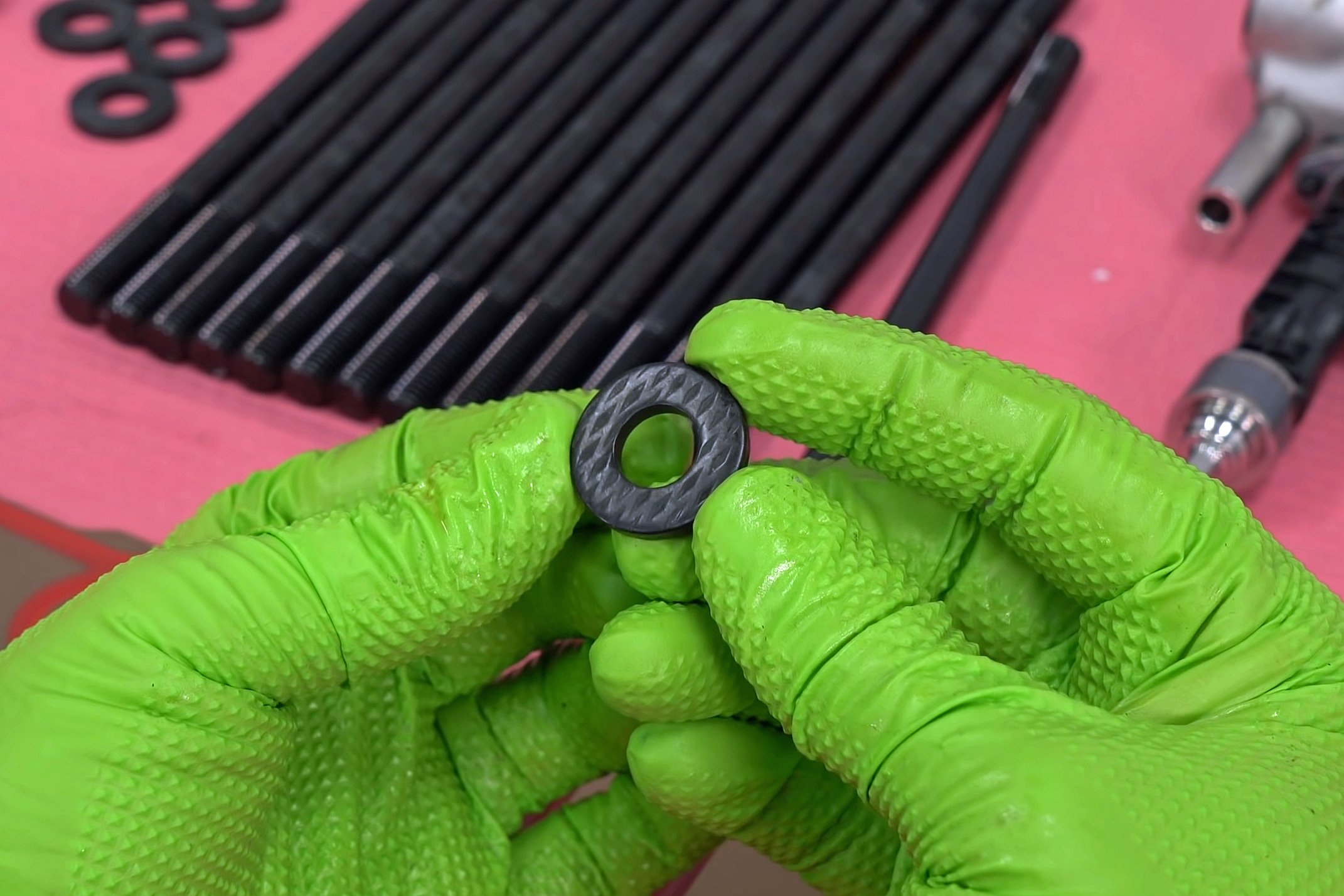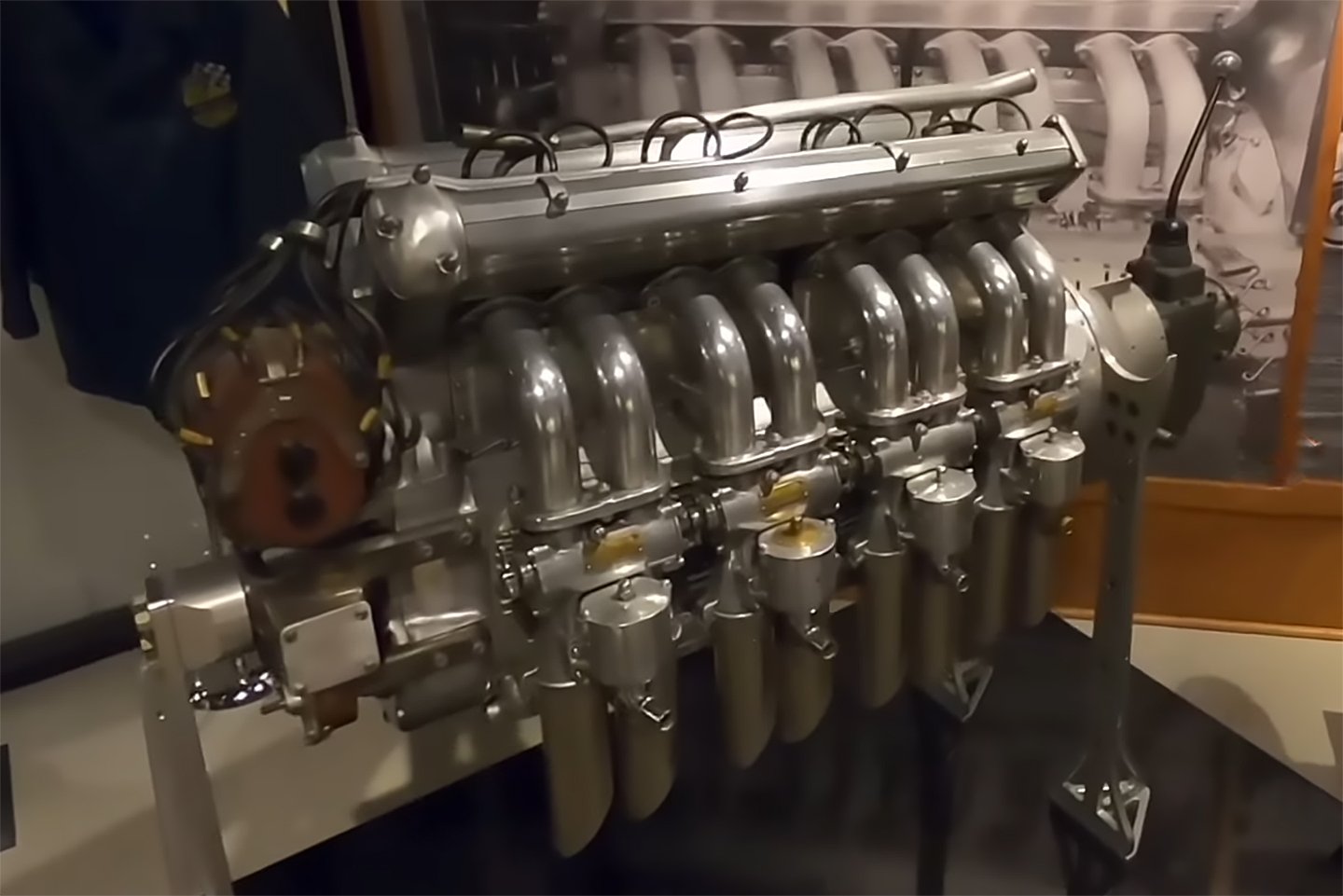A few months ago, we brought you the scoop on the very first teardown of the new Supra inline-six engine. Then, Steph Papadakis of Papadakis Racing threw down the gauntlet — he wanted 1,000 horsepower out of the new B58 engine before the end of the year.
A lofty goal to be sure, but here we are in the middle of November, and he has a complete engine on an engine stand. “We’ve been working on this engine for a few months now,” says Papadakis, understating the amount of effort he and his partners have put into developing parts for the engine. The only aftermarket parts being used in this engine are ones that Papadakis has had a hand in designing — save for the aftermarket turbocharger.
Now, the team has the B58 ready to go onto the dyno in search of a four-digit power number. Before we go there, let’s take a look at what all went into this particular engine, to prepare it for its dyno runs.
Factory-ish Shortblock
The 3.0L B58 comes with an 82mm (3.228 in.) bore and 94.6mm (3.724 in) stroke from the factory and Papadakis didn’t alter either of those dimensions in the build. He started with the untouched factory engine block as a base. When we say untouched, we mean literally.
“Everything was so clean, we didn’t even wash the block and we’re reassembling it with the original bearings,” says Papadakis. “It would be nice to stroke it to a larger displacement, but for now we’ll stick with the stock crankshaft. We’re pretty confident it will hold up to the power we want to make.”
When installing the crankshaft, this modern engine has a modern torque sequence, different from the usual three-step process. “The mains are torqued to 18 lb-ft of base torque, plus 65 degrees. Then another 65 degrees of rotation are added,” Papadakis explains.

The Carillo forged 4340 rods and custom JE Pistons coated slugs are the only aftermarket components used in the short-block. Even the rings and bearings are OEM and came out of the donor engine.
While Papadakis estimates the stock crank will hold up to the abuse of 1,000 horsepower, the rods are a different story. “We went with a set of custom chromoly steel connecting rods from Carillo,” says Papadakis. The stronger 4340 forgings will easily handle the stresses the B58 engine will produce.
Then, again with the stock components, Papadakis chose to use OEM rod bearings. “We’re reusing the factory bearings. The top bearing is a coated bearing, while the bottom half is a traditional bearing,” Papadakis explains. “We had the rods made, so that in the future if we want to use coated top bearing halves in both the top and bottom of the rod, the tang will line up.”
Moving on to the slugs, Papadakis teamed up with JE Pistons for some trick forged pistons in the OE bore diameter of 82mm. “There is a heat-resistant coating on the crown of the piston and the black coating on the skirts is an anti-friction coating to help reduce the wear on the bores,” says Papadakis.
However, it’s not just the coatings that make the pistons unique, but the fact that the ring pack incorporated into the piston has been designed to utilize the factory Supra rings. “These are actually the rings that came out of the engine. We aren’t doing anything to the bore – it’s the factory size and even the factory hone. We are just replacing the rods and pistons,” Papadakis reveals.
To eliminate the built-in OEM air-to-water intercooler, and add bungs for port injection, a custom intake manifold was needed. It was designed in SolidWorks and 3D printed out of aluminum in sections, before being welded into a single piece.
Top End Charge
Moving to the top half of the engine, obviously, the factory cylinder head is reused, but not until after Papadakis spent a significant amount of time with a die grinder and flow bench to work over the ports. In addition, Papadakis replaced the valves, valvesprings, retainers, and locks with Supertech components to make sure they were all up to the abuse planned for this engine.
One of the significant areas of upgrade in the top end is actually the fasteners. “Stock, this engine uses torque to yield head bolts, which aren’t reusable,” says Papadakis. “We also want to torque it a bit higher than factory, because of the boost pressures we’re planning on running and the horsepower levels we’re planning on making. We talked to ARP, and they made us a custom set of head studs for this engine.”
Using the factory head with significant porting, Papadakis used Supertech valvetrain components to compliment the additional flow.
In addition to making the custom studs, ARP also included their cool new knurled head stud washers. “They’re really trick, because the washers have a knurled side, which is placed against the aluminum [of the head], and the smooth side goes toward the nut so that when you torque it, only the nut is spinning.”
Using the factory MLS head gasket, Papadakis has chosen to apply 135 lb-ft of head bolt torque to the B58. “You need that torque when you are trying to keep the head down with all that boost,” Papadakis says. “When you are making big boost and big power with high cylinder pressures, it’s trying to lift that head up as much as it’s pushing the piston down.”
The rest of the insanely complicated OEM B58 valvetrain is reused. If you recall, the B58 has a unique variable lift system, which uses a screw gear and a third cam to alter the rocker arm ratio. While that system is in place, Papadakis has locked it into maximum lift mode for these tests.
Custom head studs from ARP were a necessity to keep the cylinder head in place with the high cylinder pressures of this combination. Thanks to ARP's ability to quickly whip up custom bolts, not having the application already covered was a non-issue.
The Heart of the System
The intake manifold is genuinely a work of art. It is a completely custom-built piece with absolutely nothing factory about it. “The OEM intake manifold has the water-to-air intercooler built into the intake manifold, but we want to use a traditional intake manifold, front mount intercooler, and port injectors,” explains Papadakis. “So we designed a manifold and had it 3D printed out of aluminum.” Yes, a 3D printed aluminum manifold, which will withstand the significant amount of pressure from the turbo.
Moving to the turbo, if you recall, the factory piece is an integrated-manifold, two-runner twin-scroll piece, with unique mounting to the head. The only thing retained from the factory here is the unique two-port design from the head.

The BorgWarner EFR 9280 turbocharger is capable of providing a whopping 110 lb/min of airflow. Using the widely-held loose estimation of airflow x 10.0, we see the turbo is capable of more than the 1,000-horsepower goal.
After creating a jig for fitting the new, larger turbo, Papadakis sent it off to his “turbo guys” in Arizona to fabricate the manifold. “Full Race made us this exhaust manifold, and I asked them to make the bolts accessible and they did,” laughs Papadakis. Mounted to the custom manifold is a BorgWarner EFR 9280 turbo. With a 73.7mm compressor inducer and 91mm compressor exducer, this turbo is rated to flow in the neighborhood of 1,100-plus horsepower worth of air.
To effectively control the boost on the larger turbocharger, Papadakis opted for dual external wastegates — one on each runner, and boost control will be handled by the AEM Infinity standalone ECU system Papadakis is running. For fuel, Ignite E85 was chosen for its octane rating and consistency compared to pump ethanol.
While the OEM direct injectors remain, Papadakis chose not to use them. “To keep the setup relatively simple, we didn’t use the direct injection, just port injectors.” In addition, the OEM ignition coils were utilized but needed some modification to work with the standalone. “We ended up having to add an ignitor to get those to work with the Infinity,” says Papadakis.
Rubber Meets the Road
With the engine complete, it was time to see if all the work put in by Papadakis and crew would pay off as they hoped. After some additional work to fabricate the parts needed to attach the B58 to Mountune USA’s SuperFlow SF-902 engine dyno, the team got started on power pulls. Unfortunately, day one on the dyno ended in a spectacular, heart-stopping fashion after only making 850 horsepower – 150 shy of their goal.
“We learned that when you don’t send fuel through the direct injectors, the tip can overheat. We burned up the injector and were allowing combustion to exit through that opening,” Papadakis recounts. However, after some weekend fabrication, direct injector block-off plugs were installed and the tests continued.
With the full 42 pounds of boost being ramped into the engine, the crew was still not seeing the results they expected. After some head-scratching and sleuthing, they traced the issue to an inoperative ventilation fan in the dyno cell. Once it was repaired and reactivated, the engine was breathing fresh air again, and the dyno session resumed.
With the fresh-air supply restored the 1,000 horsepower wall quickly fell, with the team ending the session with 1,033.9 horsepower at 6,700 rpm and 908.8 lb-ft of torque at 5,500 rpm, accomplishing the goal with a surprising number of OEM parts still being used, proving the potential of the B58 Supra engine.


